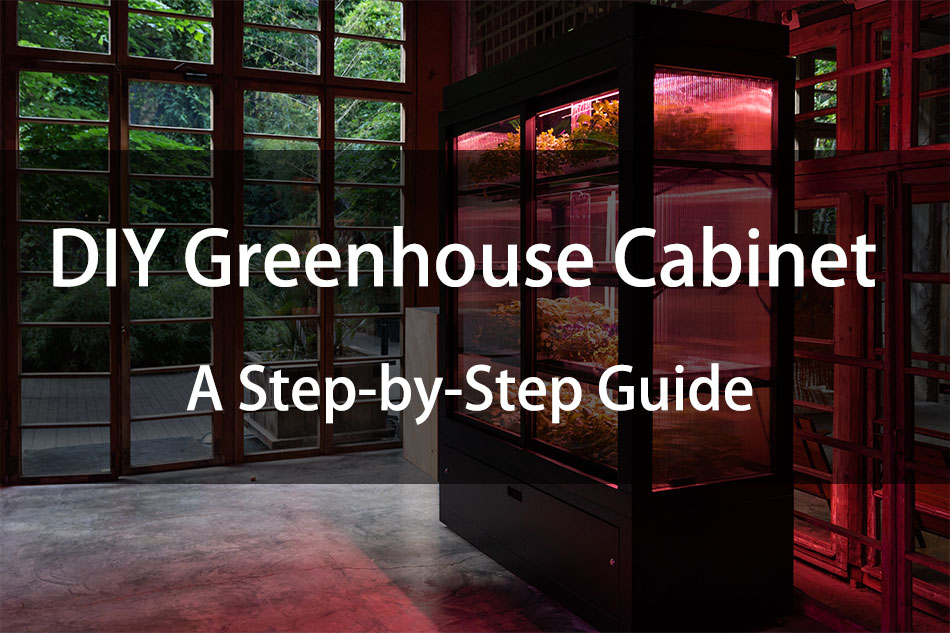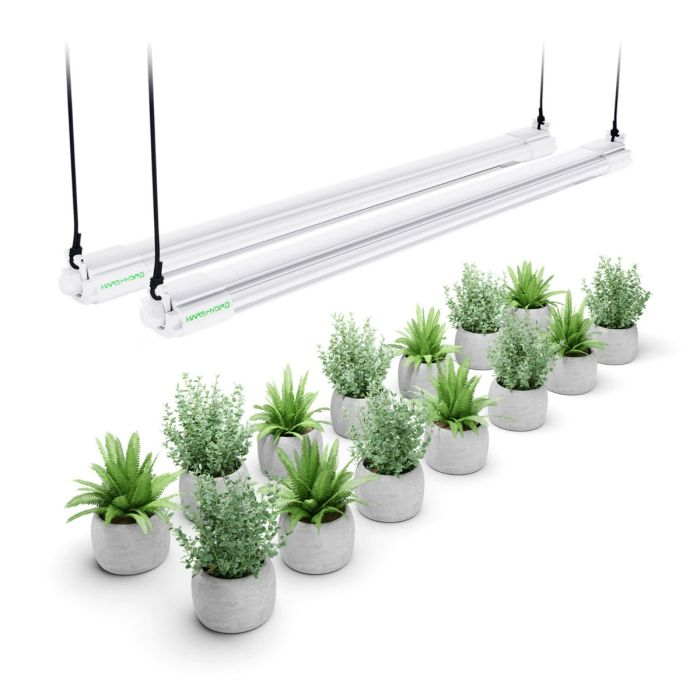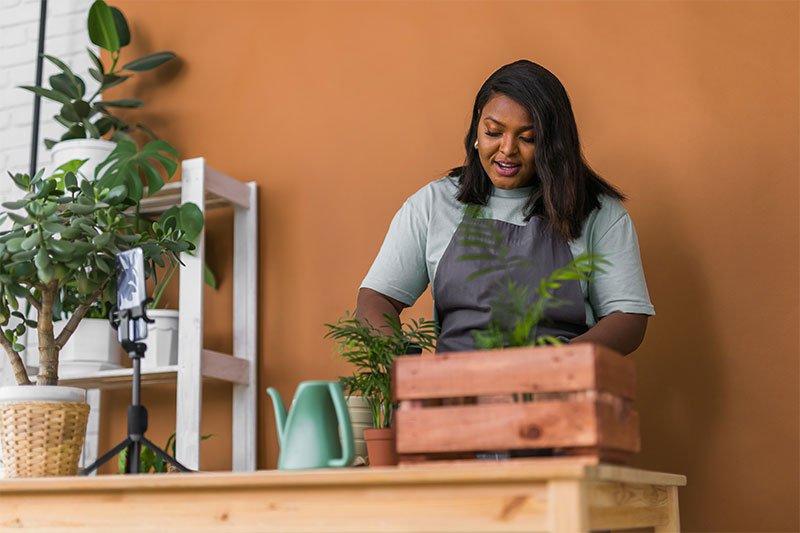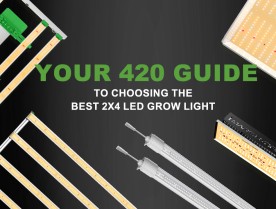
Creating your own greenhouse cabinet is a delightful project that can transform your space into a lush, green oasis, ideal for growing tropical plants and enhancing your home decor. With this step-by-step guide, you'll learn how to set up a tiny greenhouse using primarily cabinets, offering a perfect environment for your plant collection to thrive. Whether you're a seasoned gardener or a budding plant enthusiast, this DIY project is a great choice for anyone looking to bring more plants and greenery into their home.
Table of Contents
Materials You Will Need
To create your DIY Greenhouse Cabinet, you'll need a range of materials and tools to ensure the success of this project. Here's a comprehensive list of everything you'll need:
1. Cabinet: A tall, glass-fronted display cabinet.
2. Shelving: Glass shelves (if not included with the cabinet, purchase or custom-cut to fit).
3. Paint and Back Wall Material:
- Light-colored paint (for reflecting light).
- Pegboard (optional, for hanging planters or gardening tools).
4. Sealant and Humidity Control: Weather stripping seal (for around the door edges to maintain high humidity).
5. Lighting: LED grow lights.
6. Humidity and Ventilation:
- Compact humidifier (for maintaining high humidity).
- Hygrometer (for monitoring humidity levels).
- Small fan (for air circulation).
7. Plant Care and Maintenance:
- Pots with drainage holes.
- Trays or saucers (to catch excess water).
- Pruning tools (for dead or dying foliage).
8. Decorative Elements:
- Decorative pots.
- Small statues or figurines.
- Natural elements like stones or pebbles.
9. Additional Decor and Customization:
- Hanging plants (optional, for surrounding the cabinet).
- Small step ladder or shelves (for extra display areas beside the cabinet).
- Unique knobs, handles, and custom-made shelves (for personalization).
- Spray paint (for wire shelves or creative projects).
- Recycled materials (for DIY planters).
Step 1: Choosing Your Cabinet

To create a successful indoor greenhouse, the choice of cabinet is crucial. Opting for a tall, glass-fronted display cabinet is a strategic decision, as it provides ample space and visibility for a variety of plants. These cabinets are not only functional, allowing for easy monitoring of plant health and growth, but also add a decorative touch to any room.
When choosing your cabinet, ensure it offers enough room for the growth of your plants, while also fitting elegantly into your room without overwhelming the space. Consider the cabinet’s adaptability for incorporating additional features, such as specialized lighting or humidity control systems, to foster the ideal growing conditions for your indoor garden. This thoughtful approach in selecting the right cabinet is the foundation for a thriving and aesthetically pleasing indoor greenhouse.
The MILSBO from IKEA, with its tall and glass-fronted design, is an exceptional choice for those aiming to build an IKEA greenhouse cabinet. It marries sturdiness, affordability, and design versatility, making it a standout option that ensures both the flourishing of your plants and the enhancement of your space.
Step 2: Preparing the Cabinet
After choosing the perfect cabinet for your indoor greenhouse, the next step involves customizing it to create an optimal environment for your plants. Begin by assessing the cabinet's interior and remove any shelves that may block light from reaching all areas. Replacing these with glass shelves is a strategic move, as glass allows light to filter through to every level, ensuring all your plants receive adequate sunlight. If your chosen cabinet doesn’t include glass shelves, don’t worry—they can be readily purchased or custom-cut to fit your cabinet dimensions.
To enhance the aesthetic and functionality of your cabinet, consider the back wall as a canvas for creativity. Painting it in a light color can reflect more light, benefiting plant growth, or you might opt for attaching a pegboard. A pegboard not only adds a unique visual element but also serves as a versatile support for hanging planters or gardening tools, maximizing space and accessibility.
Ensuring the cabinet maintains a high humidity level crucial for many plants, especially tropical varieties, is another key aspect of preparation. Applying a weather stripping seal around the door edges is an effective way to lock in moisture, creating a mini-climate within your cabinet that supports lush, healthy plant growth. This step is crucial for mimicking the natural humidity levels that many plants desire, completing the transformation of a simple cabinet into a thriving indoor greenhouse.
Step 3: Lighting and Humidity
In the third step of setting up your indoor greenhouse cabinet, optimizing for light and humidity is paramount to ensure the health and growth of your plants.
Lighting

Even in well-lit rooms, certain areas may not receive sufficient natural sunlight, necessitating the use of grow lights as an indispensable addition to your greenhouse cabinet. To ensure uniform light distribution and that no plant is left in the dark, install grow lights under each shelf. LED grow lights, known for their energy efficiency and longevity, are particularly beneficial. They emit light in the spectrum most effectively used by plants for photosynthesis, promoting healthy growth without the excess heat that can harm sensitive plants. Among the myriad of options, the VG40 LED grow light stands out as the superior choice for this purpose, offering a blend of efficiency, performance, and innovation to your indoor garden. Moreover, the VG Series shines in its versatility, proving to be exceptionally suitable for both under canopy applications and microgreen cultivation. This adaptability enhances its utility across a diverse array of growing environments, making it a compelling choice for gardeners seeking efficiency and effectiveness in their indoor gardens.
The Mars Hydro VG40 is recognized as an ideal lighting solution for greenhouse cabinets, as well as under canopy setups and microgreen cultivation, thanks to its high quality, efficiency, and thoughtful design. Equipped with 292 high-quality LED beads, it consumes only 40 watts and emits a low Daily Light Integral (DLI), generating minimal heat. This allows for the lights to be placed close to the plants without risking damage, making it perfect for nurturing seedlings, clones, young plants, microgreens, and under canopy growth in a confined space. Additionally, the VG40's IP65-rated water resistance ensures reliable performance in the humid conditions typical of greenhouse cabinets and other growing environments. Its capability to daisy chain up to 32 units offers flexibility in lighting arrangements. With a long lifespan of 50,000 hours and a 5-year warranty, the VG40 presents a cost-effective, low-energy solution that significantly enhances the growth environment for a wide variety of plants.
Humidity
Many plants, especially those originating from tropical environments, thrive in high humidity. To replicate these conditions, introduce a compact humidifier within the cabinet. This addition can significantly boost the moisture level, mimicking the humid habitat these plants prefer. Monitoring the humidity is equally important, which is where a hygrometer comes into play. This device measures the moisture in the air, allowing you to adjust the humidifier settings as needed to maintain the ideal humidity level for your plants.
Ventilation
Good air circulation is essential for preventing the onset of fungal diseases, which can thrive in stagnant, moist environments. By incorporating a small fan in your setup, you ensure gentle air movement throughout the cabinet. This circulation helps to keep the air fresh and reduce excess moisture on plant leaves, thereby minimizing the risk of disease.
Step 4: Adding Your Plants
Now, for the exciting part – adding your plants!
 From Instagram: @lenerls_welt
From Instagram: @lenerls_welt
Begin this process by selecting a diverse mix of tropical plants, which are known for thriving in environments with high humidity and appreciating indirect sunlight. Such conditions mimic their natural habitats, promoting healthy growth and vibrancy.
As you arrange your plants, consider their individual needs for light and space. Place taller plants towards the back of the cabinet to prevent them from overshadowing shorter plants, ensuring every plant receives adequate light. Position smaller, more light-sensitive plants towards the front and lower shelves where they can bask in indirect light without being stunted by the taller foliage.
Proper drainage is crucial to avoid the pitfalls of overwatering, such as root rot. Make sure each pot has drainage holes and, if necessary, place them on trays or saucers to catch excess water. This step ensures that moisture is managed effectively within the cabinet's confined space.
Incorporating plants with varying sizes, leaf textures, and colors not only enhances the visual appeal of your indoor garden but also creates a more dynamic and stimulating environment. Leaf texture variations, from the delicate fronds of ferns to the broad, glossy leaves of philodendrons, add depth and interest. Color diversity, through flowering plants or variegated foliage, can introduce vibrant contrasts or subtle color gradations to your garden display.
This thoughtful assembly of plants, attentive to their specific needs and aesthetic contribution, will transform your cabinet into a lush, miniature indoor jungle, providing both a visual feast and a nurturing space for your plant collection.
Step 5: Maintenance and Care

Step 5 focuses on the essential aspect of maintaining your indoor greenhouse cabinet to ensure the longevity and health of your plants. Vigilant observation and responsive care are key to nurturing a thriving indoor garden. Here are some detailed strategies for effective maintenance and care:
1. Monitoring Plant Health: Regular inspections of your plants are crucial for early detection of distress signs or diseases. Look for yellowing leaves, stunted growth, or signs of pests. These symptoms can indicate issues with water, light, or nutrient levels. Addressing problems early can prevent them from spreading or worsening.
2. Adjusting Environmental Conditions: Be prepared to fine-tune the lighting, humidity, and watering schedules based on your observations and the changing needs of your plants. For example, during winter, you may need to increase light exposure or adjust the humidity levels to counteract the dry indoor air. Similarly, watering routines should be adapted to the growth phase of the plant, with more frequent watering for young, actively growing plants and reduced watering for mature, established ones.
3. Maintaining Optimal Lighting: Keeping the glass panels of your cabinet clean is vital for maximizing light penetration. Dust and grime can significantly reduce the amount of light reaching your plants, impacting their growth. Regular cleaning with a soft, damp cloth will ensure your plants receive the full benefits of your lighting system.
4. Ensuring Adequate Ventilation: Periodically opening the doors of your cabinet is important for air circulation, mimicking the natural flow of air in an outdoor environment. This not only refreshes the air within the cabinet but also helps to regulate humidity levels and prevent the buildup of mold or mildew, which can thrive in stagnant, humid conditions.
5. Pruning and Repotting: As part of ongoing care, prune dead or dying foliage to encourage new growth and maintain the aesthetic appeal of your plants. Additionally, be mindful of your plants' growth, as they may eventually require repotting into larger containers to accommodate their expanding root systems and prevent root-bound conditions.
Elevating Your Greenhouse Cabinet
Creating a greenhouse cabinet goes beyond plant care—it's an opportunity to craft a space that mirrors your personal aesthetics and creativity. This exploration of decor and additional features shows how decorative elements and accessories can transform your cabinet into a visually stunning, personalized space. From pot textures to whimsical statues, each detail enhances the aesthetic and vibe of your indoor garden. This section encourages you to blend functionality with personal expression, making your greenhouse an extension of your creativity and style.
Decor and Additional Features

Transforming your greenhouse cabinet into a visually captivating and personalized space involves more than just arranging plants. Incorporating decorative elements and thoughtfully chosen accessories can significantly enhance its appeal and reflect your personal style. Consider introducing decorative pots that complement the plants' hues or textures, adding an extra layer of beauty. Small statues or figurines nestled among the foliage can create whimsical or serene vignettes, while natural elements like stones or pebbles can ground the setup with an earthy, calming vibe.
Don't limit your creativity to the interior of the cabinet. Surrounding space offers ample opportunity for embellishment and functional decor. Hanging plants can drape gracefully around the cabinet, creating a lush, enveloping green space. A small step ladder or shelves beside the cabinet can serve as additional display areas for more plants or decorative items, enhancing the greenery and creating a more dynamic setup.
Inspiration and Customization
Your greenhouse cabinet is more than just a place to grow plants—it's a canvas for expressing your creativity and commitment to plant care. Diving into online marketplaces like Etsy can unearth a treasure trove of unique knobs, handles, and custom-made shelves that can transform the look of your cabinet. These details can make your greenhouse truly stand out and reflect your personal aesthetic.
For those who enjoy DIY projects, the possibilities are endless. Consider spray-painting wire shelves to add a pop of color or fabricating your own planters from recycled materials for a sustainable touch. These creative solutions not only inject your personality into the space but also enhance the functionality of your greenhouse cabinet. Whether it’s through bespoke hardware, innovative plant arrangement, or handmade decor, each customization adds a layer of uniqueness, making your indoor garden an inspiring reflection of your personal style and horticultural philosophy.
Conclusion
Creating an indoor greenhouse cabinet is not just a gardening project; it's an opportunity to add a unique element of decor to your home. It provides a controlled environment for your plants to thrive and serves as a stunning display for your growing collection. With these steps, you're well on your way to creating a beautiful, thriving greenhouse cabinet that will bring a touch of nature into your home all year round. Whether you're cultivating a collection of tropical plants or just looking for a creative way to display different plants, an IKEA greenhouse cabinet can be customized to meet your needs, ensuring your plants and your space look their best.







